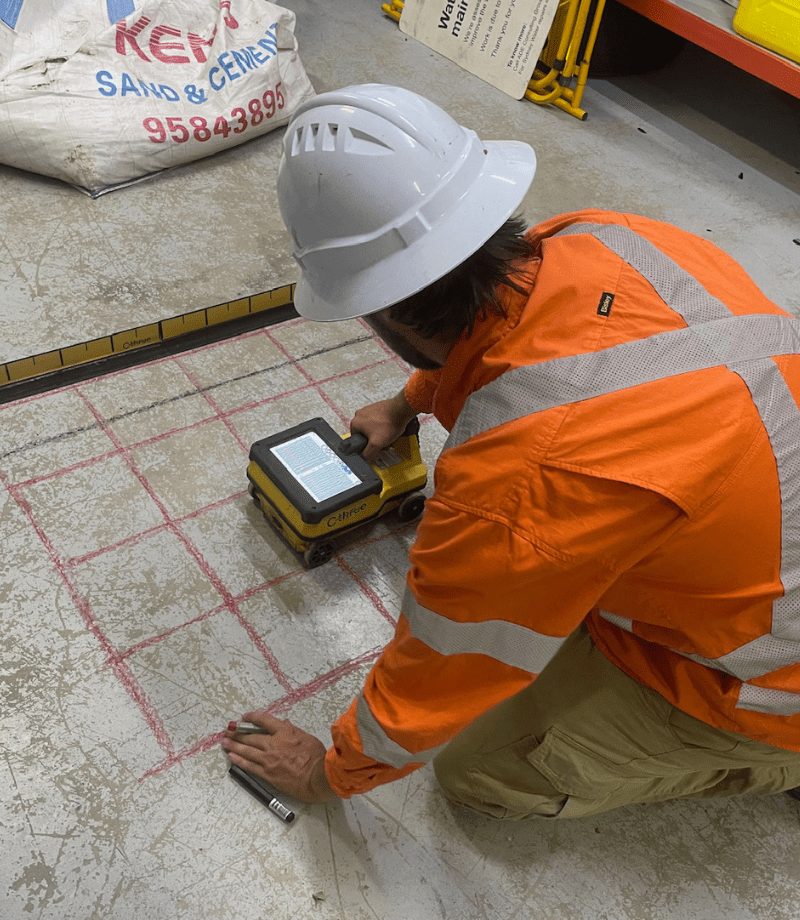RainierGPR Service Areas: Where We Offer Premier Concrete Scanning
Enhancing Project Preparation and Execution Via Advanced Concrete Scanning Methods
In the realm of project preparation and implementation, foresight and accuracy are essential elements that can make the distinction between success and problems. Advanced concrete scanning methods have actually emerged as a sophisticated device readied to elevate the criteria of task monitoring within the building sector. By using innovative technology, these strategies provide a look into the architectural stability of a structure even prior to the first brick is laid. The implications of such improvements are profound, assuring a standard shift in how projects are approached and delivered.
Advantages of Advanced Concrete Scanning Methods

Improved Accuracy in Project Analyses
Enhancing job analyses with innovative concrete scanning strategies dramatically increases the precision and dependability of building and construction examinations. By utilizing advanced scanning technologies such as ground-penetrating radar (GPR) and 3D imaging, job teams can now obtain detailed insights into the condition of concrete frameworks, recognizing prospective defects or weak points that might not be noticeable to the naked eye. This boosted degree of accuracy in project assessments makes it possible for construction professionals to make even more enlightened choices relating to repair service and upkeep methods, bring about boosted total job end results.
Moreover, the enhanced accuracy in task analyses attained via advanced concrete scanning methods aids in reducing the risk of unanticipated concerns during the construction stage. By proactively detecting hidden abnormalities within concrete structures, such as rebar deterioration or gaps, project teams can resolve these concerns at an early stage, avoiding costly delays and rework later in the project lifecycle. Ultimately, the boosted go to the website precision in project evaluations facilitated by advanced concrete scanning techniques adds to better efficiency, cost-effectiveness, and top quality in construction index projects.
Very Early Identification of Architectural Challenges
Very early detection of architectural challenges plays an important role in guaranteeing the honesty and security of concrete frameworks throughout the building process. Recognizing possible problems at a beginning enables timely treatment, protecting against expensive rework, timetable delays, and safety and security risks. Advanced concrete scanning methods, such as ground-penetrating radar (GPR) and 3D imaging, make it possible for task teams to discover concealed flaws, gaps, reinforcement layout disparities, and various other anomalies that might compromise the structure's security.
By implementing these strategies during the planning and execution stages, construction experts can proactively resolve structural difficulties before they intensify right into significant troubles. For example, detecting inadequate concrete cover over reinforcement bars at an early stage can protect against corrosion and architectural weakening over time - RainierGPR Service Areas. In addition, recognizing variants in concrete density or thickness can aid enhance product usage and make sure uniform strength homes across the framework

Ultimately, very early identification of architectural challenges with sophisticated concrete scanning not only improves the overall quality and durability of the building but likewise adds to a safer developed setting for users and passengers.
Boosted Precaution in Construction
The application of robust safety protocols is critical in the construction sector to alleviate threats and secure the well-being of employees and stakeholders. To boost security actions, construction firms are significantly adopting technical innovations such as wearable tools that check workers' essential signs and detect prospective wellness issues in real-time. By prioritizing safety through the consolidation of advanced innovations and comprehensive training programs, building jobs can considerably lower crashes and produce a secure functioning atmosphere for all included.
Streamlining Task Administration Processes
To enhance functional efficiency and ensure job success in the building industry, an emphasis on enhancing project monitoring processes is vital. By applying effective task management procedures, building and construction projects can decrease hold-ups, minimize costs, and improve total productivity.

Final Thought
In verdict, the usage of advanced concrete scanning methods uses many advantages for project planning and implementation. These strategies offer better accuracy in task assessments, early recognition of structural obstacles, boosted safety actions in building, and streamlined task monitoring processes. Including Source these methods right into task workflows can inevitably result in extra effective and efficient end results in construction jobs.
Ultimately, the boosted precision in project evaluations promoted by sophisticated concrete scanning techniques contributes to better effectiveness, cost-effectiveness, and quality in building and construction jobs. RainierGPR Service Areas.
To maximize operational performance and make certain job success in the building industry, an emphasis on enhancing project monitoring procedures is vital. By applying reliable task administration procedures, building and construction projects can lessen delays, reduce expenses, and enhance total productivity. By improving task monitoring processes with innovation combination, clear communication, and data-driven strategies, construction jobs can achieve better effectiveness, cost-effectiveness, and effective outcomes.
These methods give enhanced accuracy in task analyses, early recognition of structural obstacles, improved safety and security steps in construction, and streamlined job management procedures.